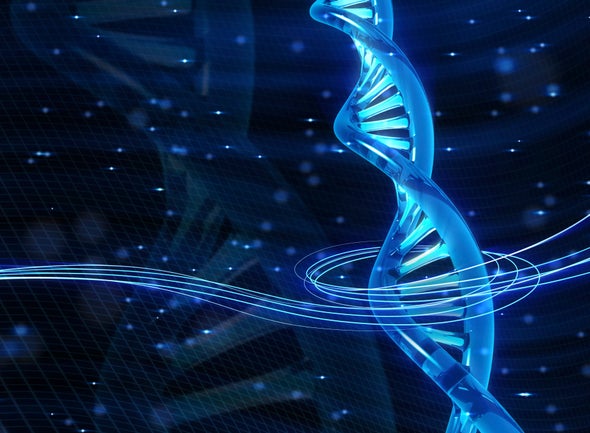Is There a Way to Have a Chimera Use an Art

iii Human Chimeras That Already Be
Some people—such as fetuses that blot a dead twin—have two sets of DNA

The news that researchers want to create human-animal chimeras has generated controversy recently, and may conjure up ideas about Frankenstein-ish experiments. But chimeras aren't e'er man-fabricated—and at that place are a number of examples of human chimeras that already exist.
A chimera is essentially a unmarried organism that's made up of cells from two or more than "individuals"—that is, information technology contains two sets of DNA, with the code to make two separate organisms.
One way that chimeras can happen naturally in humans is that a fetus can absorb its twin. This tin occur with fraternal twins, if i embryo dies very early in pregnancy, and some of its cells are "captivated" past the other twin. The remaining fetus volition have ii sets of cells, its own original set, plus the one from its twin. [Seeing Double: 8 Fascinating Facts Well-nigh Twins]
These individuals often don't know they are a chimera. For instance, in 2002, news outlets reported the story of a adult female named Karen Keegan, who needed a kidney transplant and underwent genetic testing forth with her family, to meet if a family member could donate one to her. But the tests suggested that genetically, Keegan could not exist the mother of her sons. The mystery was solved when doctors discovered that Keegan was a chimera—she had a different prepare of Dna in her blood cells compared to the other tissues in her body.
A person can besides be a bubble if they undergo a bone marrow transplant. During such transplants, which tin be used for example to treat leukemia, a person volition accept their ain os marrow destroyed and replaced with bone marrow from another person. Bone marrow contains stem cells that develop into red blood cells. This ways that a person with a bone marrow transplant will take blood cells, for the rest of their life, that are genetically identical to those of the donor, and are not genetically the same as the other cells in their own torso.
In some cases, all of the blood cells in a person who received a bone marrow transplant will friction match the DNA of their donor. But in other cases, the recipient may take a mix of both their own blood cells and donor ones, according to a 2004 review paper in the periodical Bone Marrow Transplantation. A blood transfusion volition also temporarily requite a person cells from someone else, but in a bone marrow transplant, the new blood cells are permanent, co-ordinate to the Tech Museum of Innovation in San Jose, California.
More commonly, people may exhibit so-chosen microchimerism—when a small-scale fraction of their cells are from someone else. This tin can happen when a adult female becomes pregnant, and a small number of cells from the fetus migrate into her claret and travel to dissimilar organs.
A 2015 study suggested that this happens in most all pregnant women, at least temporarily. The researchers tested tissue samples from the kidneys, livers, spleens, lungs, hearts, and brains of 26 women who tragically died while pregnant or inside 1 month of giving nascency. The study plant that the women had fetal cells in all of these tissues. The researchers knew that the cells were from the fetus, and not from the female parent, because the cells independent a Y chromosome (constitute merely in males) and the women had all been carrying sons.
In some cases, fetal cells may stay in a woman's body for years. In a 2012 written report, researchers analyzed the brains of 59 women ages 32 to 101, later they had died. They found 63 percent of these women had traces of male DNA from fetal cells in their brains. The oldest woman to accept fetal cells in her brain was 94 years old, suggesting that these cells can sometimes stay in the body for a lifetime.
- The 9 Most Interesting Transplants
- Inside Life Scientific discipline: Once Upon a Stem Cell
- 11 Body Parts Grown in the Lab
Copyright 2016 LiveScience, a Purch company. All rights reserved. This cloth may not be published, broadcast, rewritten or redistributed.
Source: https://www.scientificamerican.com/article/3-human-chimeras-that-already-exist/
0 Response to "Is There a Way to Have a Chimera Use an Art"
ارسال یک نظر